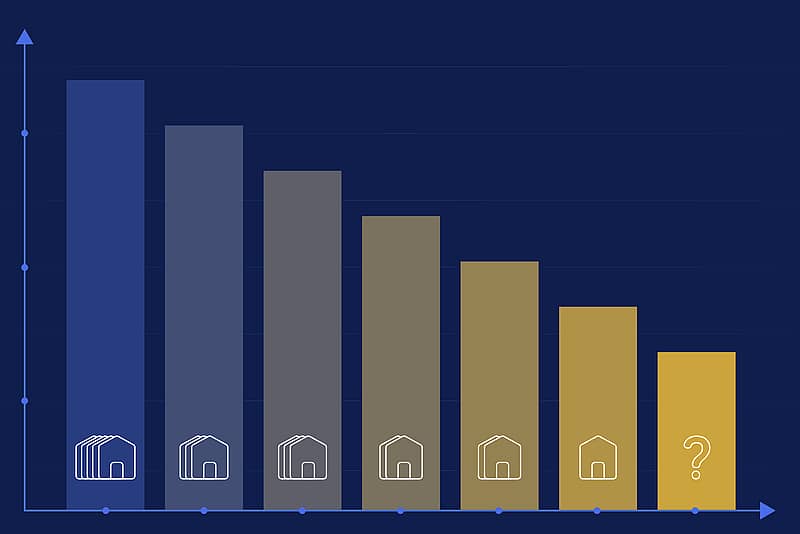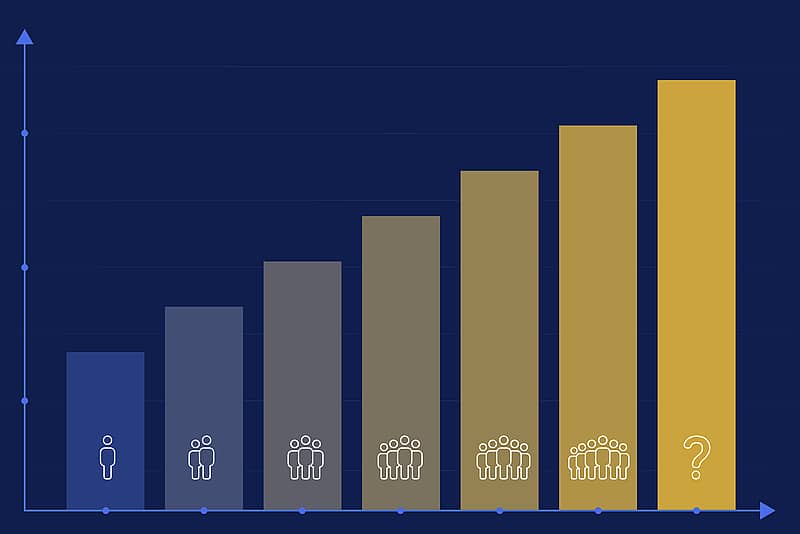Part 3: The Demographic Shift
Economically healthy societies require balance between age cohorts. Those who are too old to provide for or take care of themselves rely on those who can work and support programs to provide life’s needs. Those working will eventually grow old, “age out” of the workforce, and rely on those in younger cohorts to backfill their roles.
The significant size of the baby boomer population has been visible for many years. The implications of boomers aging, moving out of the labor force, and the associated pressures on social systems have been widely discussed and to a certain degree planned for. The declines in fertility and the resulting deficit of births, however, have largely gone unnoticed.

This shift will be very apparent in the 15-year period from 2020 to 2035. As shown in the chart above, the number of older age dependents (65+) will grow almost 33% – ballooning from 54.4 million to 72.2 million. Almost 18 million more. The country will also have 10 million fewer producers (15-64) that can assist in managing these changes and shoulder the financial burdens. At the same time, the number of younger dependents (0-14) will shrink almost 26% – going from 61.3 million to 45.6 million. Are our schools prepared for this? They are not, but that’s for a different piece…
Where and how will these changes affect the housing industry?
Different areas will be impacted more than others. Those with the highest growth of older people and the biggest drop in young people will probably see the biggest impacts. The map below shows which areas will have the greatest change in the ratio of older people to working age population between 2020 and 2035. Adding an overlay of total population reveals the pockets of biggest change. Deep red colors represent both heavily populated areas and those of the greatest percent change of older people to working age people. Note that very few areas show shades of blue or grey which would represent areas of moderate change and there are no areas of purple which would represent highly populated areas with no change.

Let’s dive deeper and take a look with more granularity…
You may notice the two dark red adjacent counties in Texas. Representing parts of the Dallas-Fort Worth area, Dallas and Tarrant counties have a combined population of almost 5 million people and will see some big changes in the coming years. Younger population (0-14) will shrink by 26% – from 1 million to 750K and older population (65+) will increase 31%. By 2035, there will be virtually the same number of people over 65 as people under 15 (see below).

Is the housing stock ready for these changes? People over 65 will account for 16% of the area’s population, yet as you can see from the chart below, 92.5% of the available housing stock is larger than 3 rooms. Only 7.5% of the total housing units in Dallas and Tarrant counties are smaller than 3 rooms.

And, according to building permit issuance (see below), single family houses are virtually the only type of unit that have been built since 2010.

How will this affect you?
These demographic shifts are just beginning to be felt. The changes happening are going to present tremendous challenges for business and society. We need to re-evaluate the fundamental components of our economic systems and rethink our approaches to infrastructure and community development. Virtually all aspects of American life will be impacted.
Things are happening now. Take a look around you and realize what’s going on. Bad things happen when decisions are made on flawed facts. Problems can be averted, and disruption always brings opportunity.
Don’t let change lead you.




